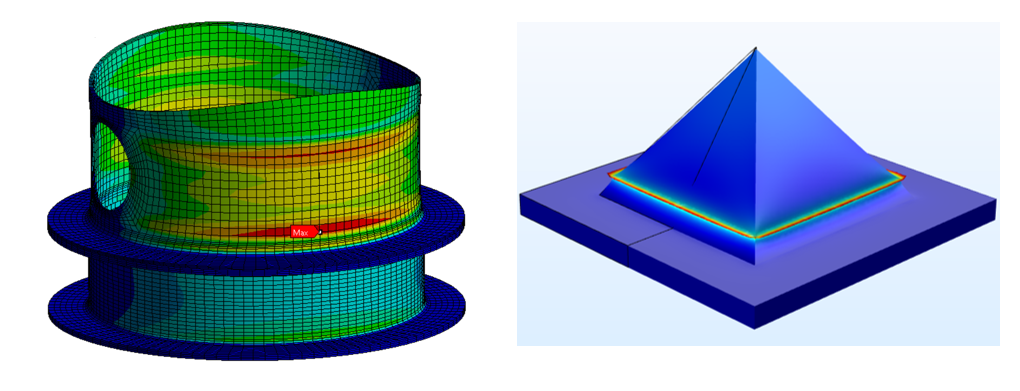Multiphysical finite element simulation
Nano to Micro/Macro (Micro-macro simulation methods)
This technique allows to study the behaviour of continuous (mostly macroscopic) systems, characterised by materials with known properties and including, at same time, more than one of the following physics:
- elastic or elasto-plastic simulations, i.e., steady-state simulations in which the component/structure is subjected to known static structural loads and constraints;
- heat transfer simulations, i.e., steady-state or transient simulations in which the component/structure is subjected to conductive, convective and/or radiative heat loads;
- fluid-dynamics simulations, i.e., i.e., steady-state or transient simulations in which the component/structure interacts with laminar or turbulent fluid flows.
Example numerical simulations that can be performed are typical of several industrial sectors:
- thermal-structural analysis of additively manufactured components;
- thermal-fluid dynamic simulations of fluid flow in heated pipes (also with reference to microfluidic applications);
- fluid-structure interaction studies of components/structures hit by a fluid flow (also with reference to blood vessels and other biomedical applications).
This technique is not perfectly suitable for non-continuous systems, e.g., those including the fracture of materials.



